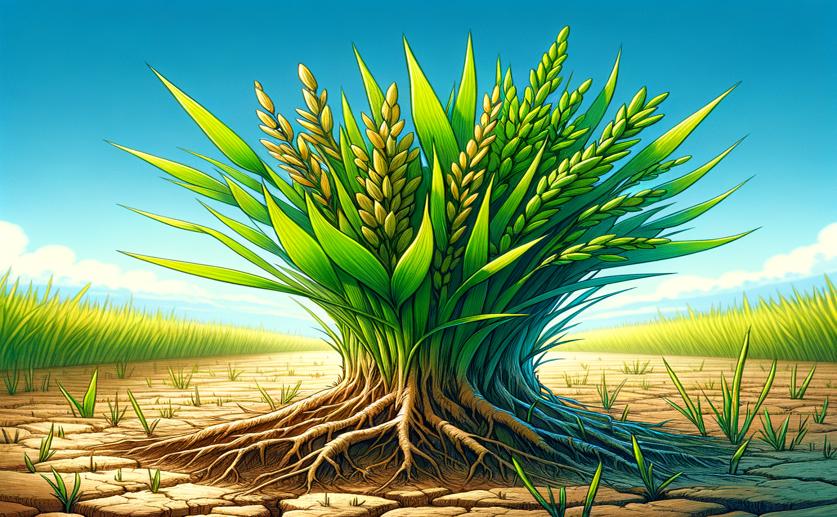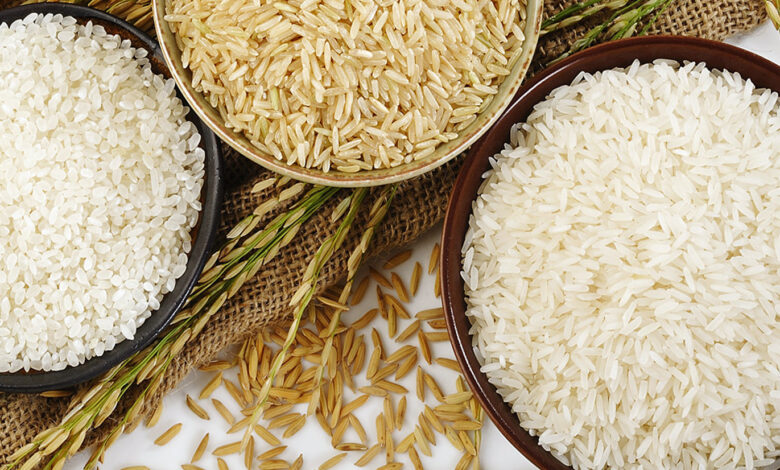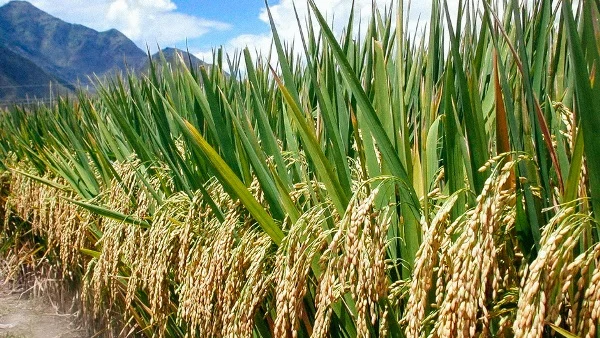Tags
How a Rice Protein Helps Plants Survive Drought
Jim Crocker

Key Findings
- Researchers at Seoul National University found that a small protein in rice, OsS1Fa1, enhances drought tolerance
- OsS1Fa1 localizes to both the nuclear and cytoplasmic membranes, and its transmembrane domain is crucial for this localization
- Overexpression of OsS1Fa1 in transgenic Arabidopsis plants significantly improved drought tolerance, highlighting its potential for developing drought-resistant crops
Drought tolerance is a critical trait for crops, especially in regions prone to water scarcity. Understanding the molecular mechanisms behind drought resistance can lead to the development of more resilient crop varieties. A recent study conducted by researchers at Seoul National University has shed light on the role of a small protein in rice, OsS1Fa1, in enhancing drought tolerance. This study not only advances our understanding of plant stress responses but also ties into broader research on plant peptides and their regulatory roles.
The study focuses on OsS1Fa1, a homologue of the spinach S1Fa protein, which contains four distinct conserved motifs. These motifs had not been previously characterized, prompting the researchers to investigate their roles in the protein’s localization and function within the cell. Using confocal laser scanning microscopy (CLSM), particle bombardment, and bacterial infiltration, the team analyzed the subcellular localization of OsS1Fa1. They discovered that OsS1Fa1 localizes to both the nuclear and cytoplasmic membranes, a finding that was further confirmed through mutation and cell fractionation analyses. These analyses revealed that the transmembrane domain of OsS1Fa1 is crucial for its membrane localization.
Interestingly, the study also found that the rice homologue OsS1Fa2 and Arabidopsis orthologs AtS1Fa1, AtS1Fa2, and AtS1Fa3 exhibited similar localization patterns as OsS1Fa1. This suggests a conserved mechanism across different plant species. Additionally, the researchers conducted an E. coli in vivo reconstituted sumoylation assay to investigate whether OsS1Fa1 undergoes sumoylation, a process where a small ubiquitin-related modifier (SUMO) is attached to a protein, often altering its function or localization. The results confirmed that OsS1Fa1 is indeed conjugated with SUMO.
To further explore the functional significance of OsS1Fa1 in drought tolerance, the researchers created transgenic Arabidopsis plants overexpressing either OsS1Fa1 or a mutant form of the transmembrane domain, OsS1Fa1(TMm1). They found that overexpression of OsS1Fa1 significantly improved the drought tolerance of the transgenic Arabidopsis plants, whereas the mutant form did not confer the same benefit. This indicates that the transmembrane domain is essential for the drought tolerance function of OsS1Fa1.
These findings build upon earlier research on the genetic and molecular mechanisms underlying plant stress responses. For instance, previous studies have highlighted the role of plant peptides in stress signaling, including responses to drought. The identification of peptides derived from small open reading frames (sORFs) as critical regulators in plant development and environmental responses further underscores the importance of small proteins like OsS1Fa1 in managing stress. Moreover, the study on the peanut genome revealed the expansion of specific gene families, such as the S1Fa-like transcription factor family, which is more highly expressed in roots and etiolated seedlings than in green leaves, suggesting a role in subterranean fructification and potentially in stress responses.
The research conducted by Seoul National University not only enhances our understanding of the specific functions of OsS1Fa1 but also contributes to the broader field of plant stress biology. By elucidating the roles of conserved motifs in OsS1Fa1 and demonstrating the importance of its transmembrane domain, this study provides valuable insights into the molecular mechanisms of drought tolerance. These findings could have significant implications for the development of drought-resistant crops, offering a potential solution to the challenges posed by water scarcity in agriculture.
https://naturalsciencenews.com/article/7027Published Date: August 25, 2024






